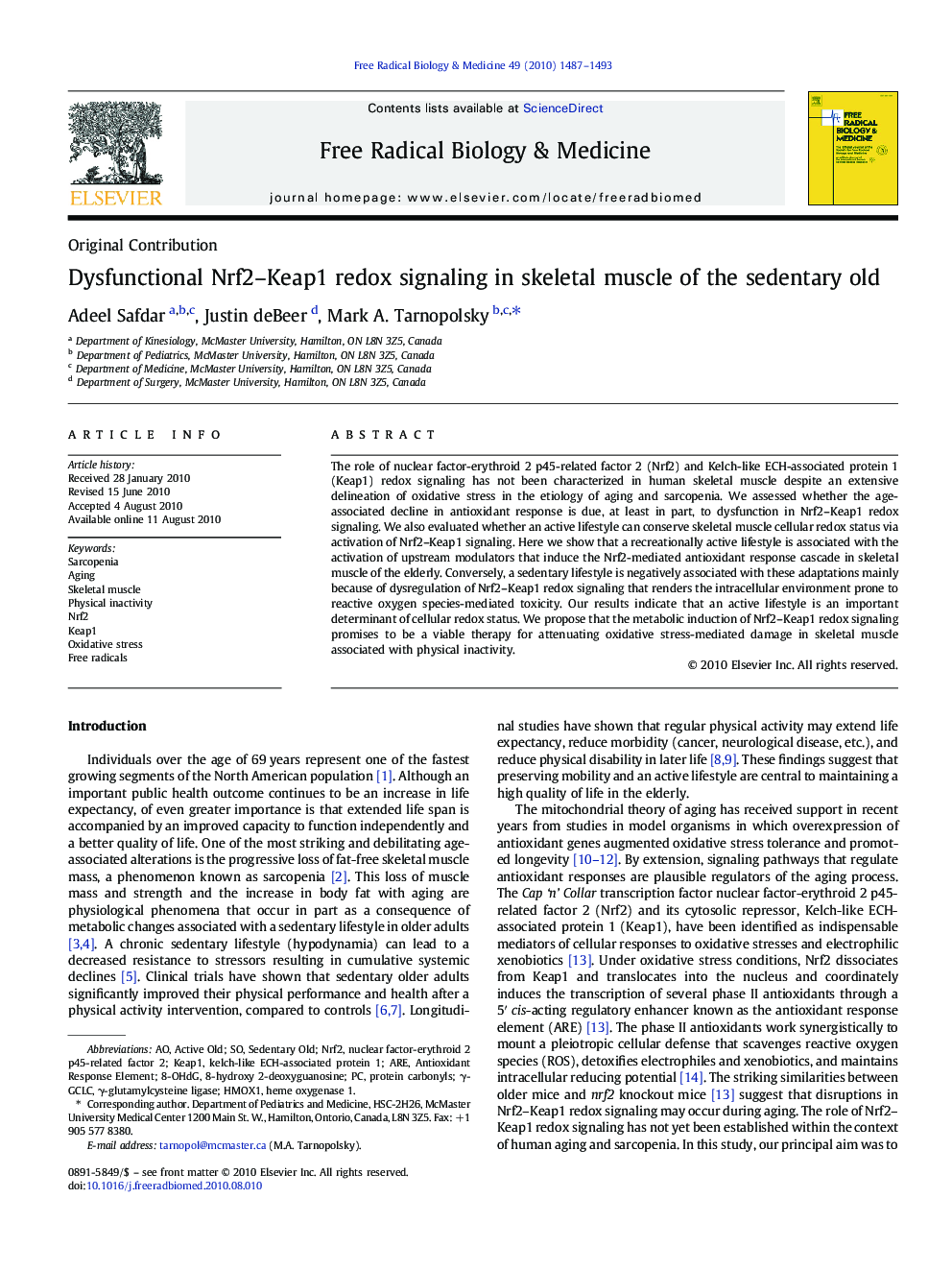| Article ID | Journal | Published Year | Pages | File Type |
|---|---|---|---|---|
| 1909394 | Free Radical Biology and Medicine | 2010 | 7 Pages |
The role of nuclear factor-erythroid 2 p45-related factor 2 (Nrf2) and Kelch-like ECH-associated protein 1 (Keap1) redox signaling has not been characterized in human skeletal muscle despite an extensive delineation of oxidative stress in the etiology of aging and sarcopenia. We assessed whether the age-associated decline in antioxidant response is due, at least in part, to dysfunction in Nrf2–Keap1 redox signaling. We also evaluated whether an active lifestyle can conserve skeletal muscle cellular redox status via activation of Nrf2–Keap1 signaling. Here we show that a recreationally active lifestyle is associated with the activation of upstream modulators that induce the Nrf2-mediated antioxidant response cascade in skeletal muscle of the elderly. Conversely, a sedentary lifestyle is negatively associated with these adaptations mainly because of dysregulation of Nrf2–Keap1 redox signaling that renders the intracellular environment prone to reactive oxygen species-mediated toxicity. Our results indicate that an active lifestyle is an important determinant of cellular redox status. We propose that the metabolic induction of Nrf2–Keap1 redox signaling promises to be a viable therapy for attenuating oxidative stress-mediated damage in skeletal muscle associated with physical inactivity.
